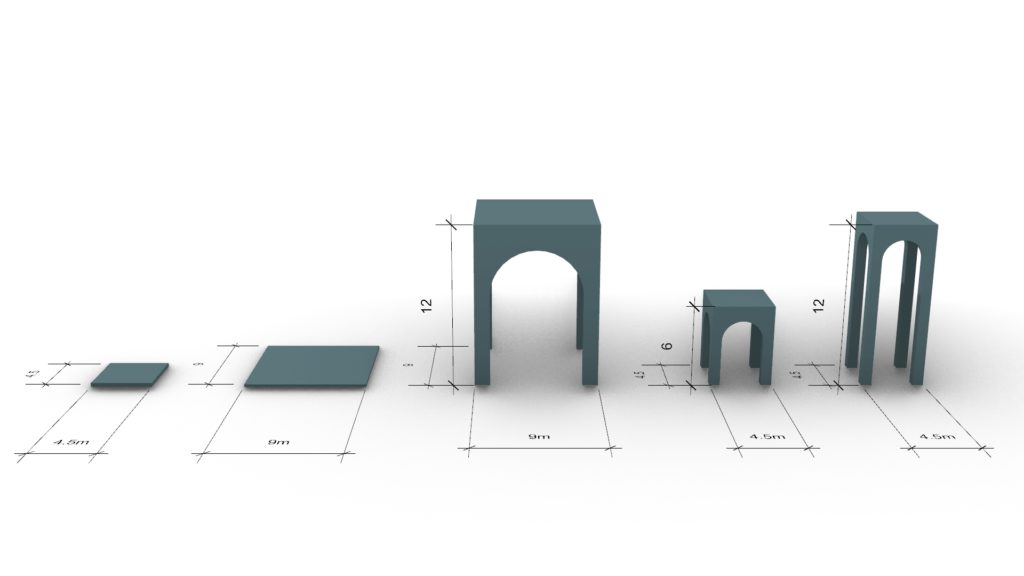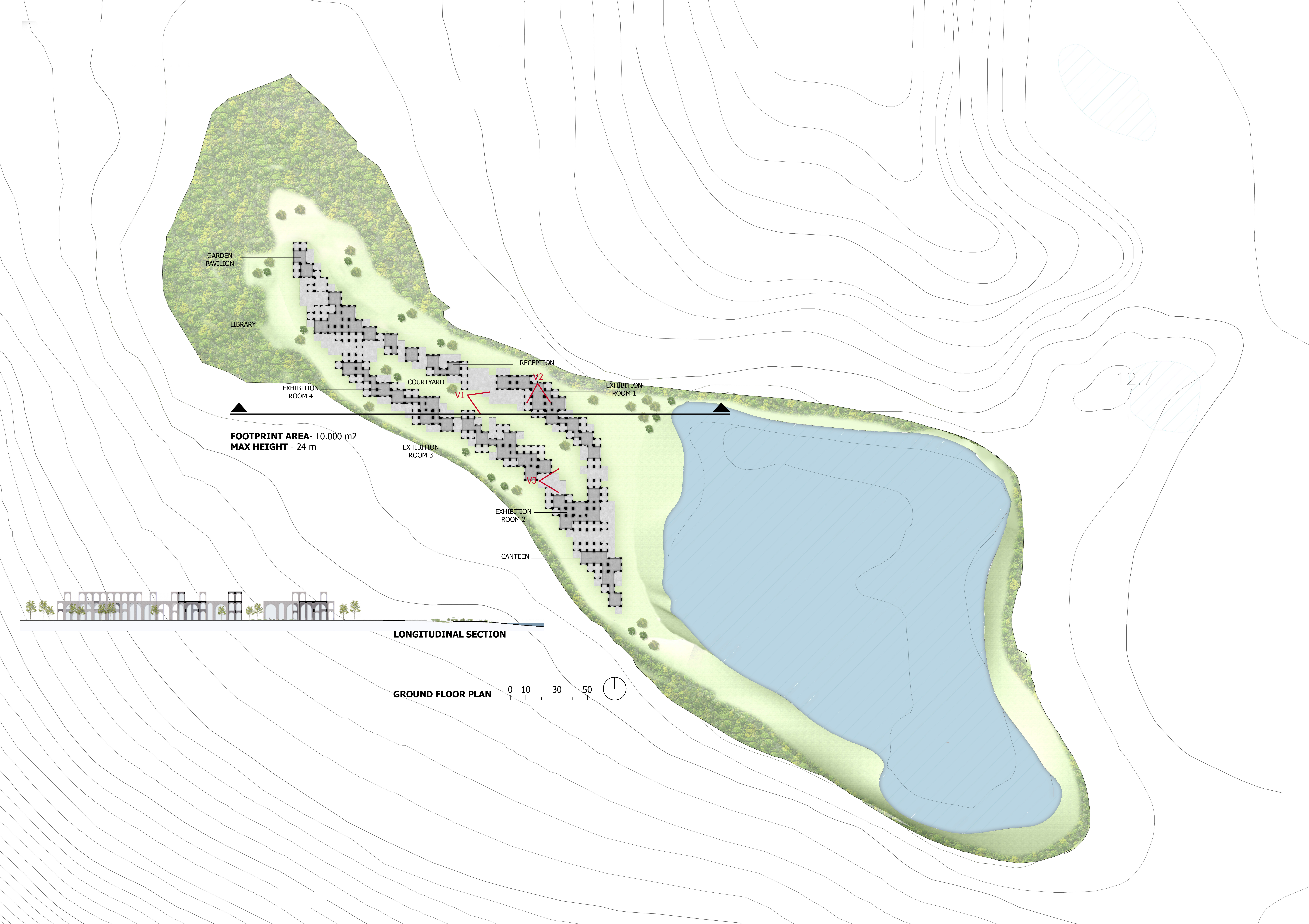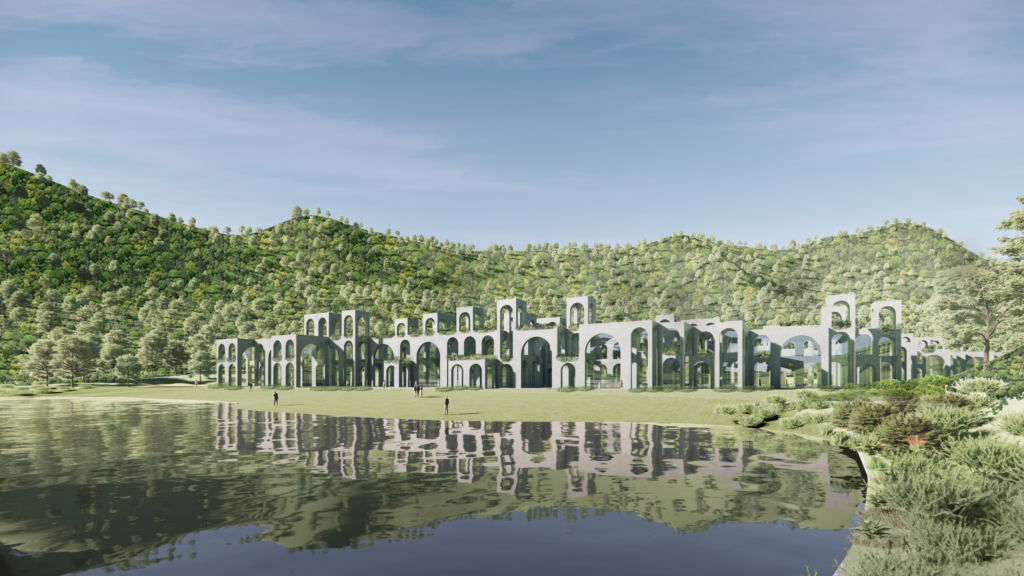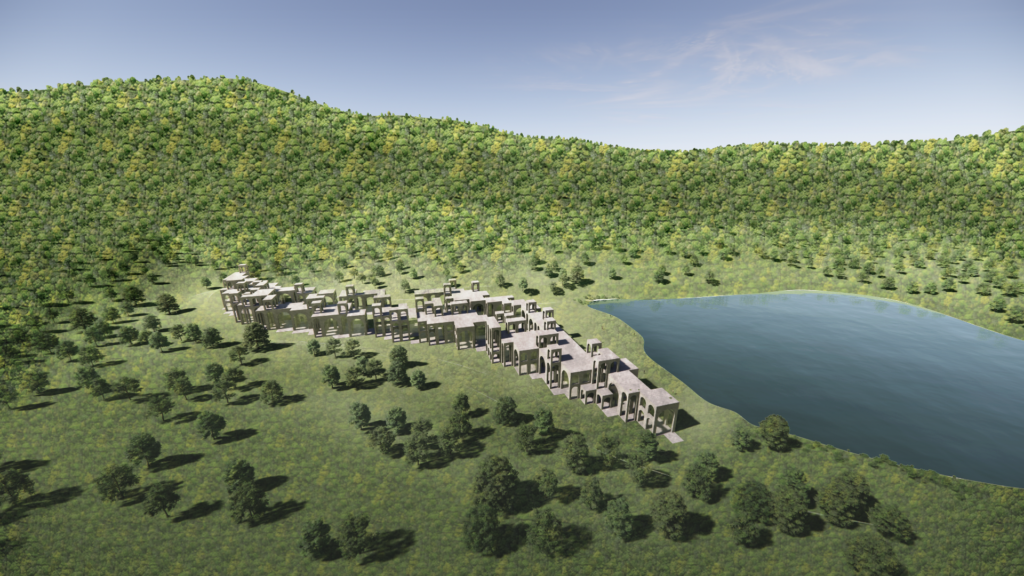The project’s objective is to design a wildlife museum in the crater of a volcano in Pozzuoli, near Naples, using one of the computational methodologies learned in the Complex Forming class. In this case, aggregation is the chosen method using the Wasp plugin in grasshopper.
CONCEPT DESIGN
Concept inspired by the nearby ruins of Pompeii and the power of nature to reclaim what is his. The design intends to replicate the ruins of a roman village by populating the site with precast arches and columns to get a labyrinth of columns that blend into the landscape.

DESIGN PROCESS
I started designing different aggregation parts and testing them to see which ones give the best results. As shown in the image below, I narrowed it down to three parts of different dimensions to guarantee a higher level of diversity in plan and elevation. I also designed two slab parts to use as a support and ensure the aggregation parts always stand vertically.

Steps followed for the computational design workflow: tr
1- Design aggregation parts
2- Setup a square grid on the side
3 -Define the building footprint using a curve that follows the flat topography to minimize the building’s impact on the terrain.
4- Use the same method to create an internal courtyard.
5- Create the massing that will work as the boundary of the aggregation
6- Run the first aggregation to generate the slab base that will support the building
7-Run the second aggregation with the arches parts, but first, write the rules that will control the process to guarantee a realistic result that meets expectations.

After running several iterations, I chose the design option that meets the GFA requirements and better suits the design intent in terms of plan and elevation.
GROUND FLOOR PLAN
On plan, the result is a column maze that proposes a labyrinthic circulation around a courtyard surrounded by nature. The dark grey areas indicate the enclosed spaces like exhibition rooms, libraries, canteen, etc. And the light grey the porched zones to enjoy the Mediterranean weather al fresco.

PROJECT VIEWS
The view from the lake shows how the building and nature merge, and from the close-up views of the courtyard and the interior courtyard can appreciate how the building achieves the look of roman ruins through the defragmented appearance resulting from the aggregation process.




